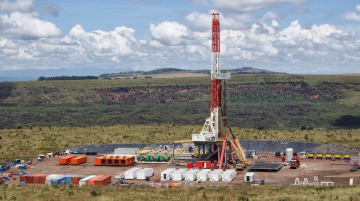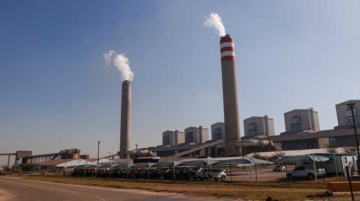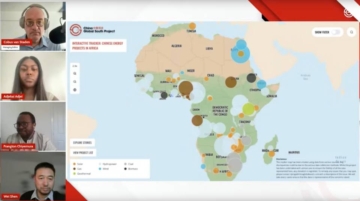
This report, authored by International Development expert Dr. Frangton Chiyemura, examines the scale and significance of Chinese-backed energy projects across Africa. From solar parks in Mali to massive hydropower dams in Zambia, it explains how these initiatives are distributed, why they matter, and what they mean for Africa’s long-term development. The China-Africa Energy Tracker complements this analysis by mapping the projects in detail, offering readers both the critical context and the granular data needed to understand one of the most consequential energy partnerships of our time.
Powering Africa: China’s Expanding Role in the Continent’s Energy Future
by Dr. Frangton Chiyemura

China has emerged as a pivotal partner in addressing Africa’s critical energy infrastructure gap, with over 600 million people on the continent—primarily in sub-Saharan Africa—lacking electricity access. This report examines Chinese-backed energy projects in Africa from 2020 to 2024, highlighting the scale, strategies, and implications of this partnership for Africa’s sustainable development goals.
Key Insights:
- Strategic Engagement: From 2020 to 2024, Chinese investments totaling over USD 33 billion have delivered over 32 gigawatts (GW) of power generation capacity across 30 African countries. This engagement underscores China’s role as a key driver of Africa’s energy transition and its ability to adapt to local contexts while addressing infrastructure needs.
- Renewable Energy and Regional Focus: Analysis of 84 identified projects reveals a concentration in Southern Africa (35 projects), followed by West Africa (22), East Africa (16), Central Africa (6), and North Africa (5). Renewable energy dominates the portfolio, with hydropower and solar leading the mix, complemented by gas, wind, coal, geothermal, biomass, and wave energy. This distribution highlights China’s strategic emphasis on sustainability and local needs.
- Investment Models and Implementation: Chinese involvement increasingly demonstrates sophistication through flexible financing structures, including hybrid models combining Chinese and international capital. This evolution extends to projects where Chinese entities serve solely as builders or equipment suppliers, with non-Chinese financing sources, indicating growing global confidence in Chinese technical expertise. Resource-rich countries have attracted substantial investments, as evidenced by Zimbabwe and Angola, suggesting a strong resource-infrastructure connection in investment decisions.
- Challenges and Opportunities: Despite significant progress, several projects face delays or dormancy due to technical, financial, or political challenges. These hurdles underscore the complexities of large-scale infrastructure development in Africa. The success of these
investments will depend on careful consideration of project viability, effective risk management strategies, and continued adaptation to local contexts and needs.
These insights provide valuable guidance for policymakers, researchers, and stakeholders involved in Africa’s energy sector development, particularly as the continent works towards achieving universal electricity access and sustainable development goals.
More on China-Africa Energy
The Porcelain Jar at the End of the Rainbow
The Porcelain Jar at the End of the Rainbow is a new series by CGSP’s Non-Resident Fellow for Africa, Adjekai Adjei, that unpacks how Chinese-backed power projects in Africa actually work. As global development partners shift and electricity demand rises, understanding China’s role — from financing and procurement to project delivery — has never been more important. Each installment offers practical, field-informed insights for policymakers, developers, and researchers navigating complex infrastructure environments. Explore the full series.
Connecting to African Power: Trends from The China-Global South Project’s Africa-China Energy Tracker
This essay by CGSP Managing Editor Cobus van Staden explores how Chinese-backed electricity projects are reshaping Africa’s energy landscape. Drawing on the Africa-China Energy Tracker, it highlights the rise of renewable energy, the persistence of Chinese funding, and the growing role of African-led projects. Cobus also examines emerging patterns — from “small is beautiful” modular projects to the risks posed by large hydroelectric installations — offering a nuanced, data-driven view of China’s diverse involvement in powering the continent.












